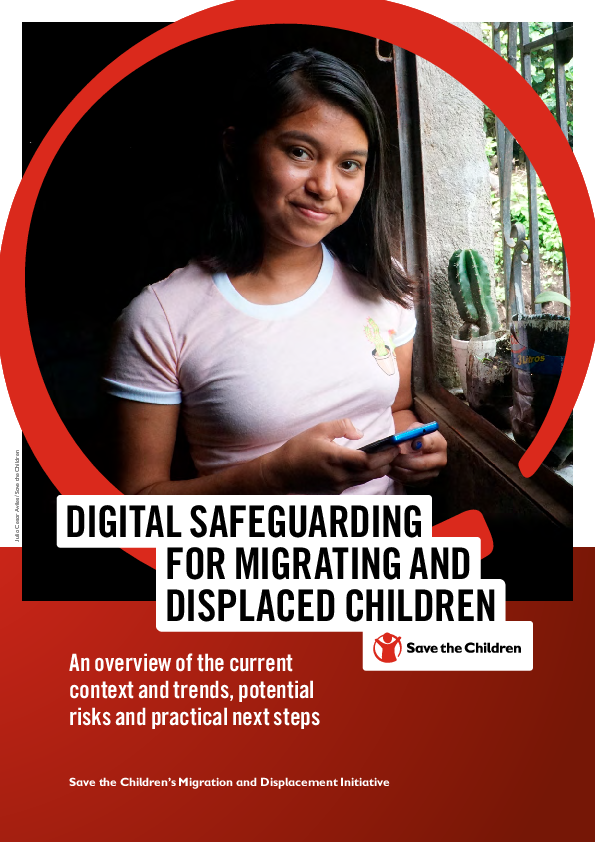
Reports, Study: Research
Digital Safeguarding for Migrating and Displaced Children: An overview of the current context and trends, potential risks and practical next steps
Publication year:
2020
English
Format:
pdf (3.7 MiB)
Publisher:
Save the Children International
An estimated 34 million children and youth are forcibly displaced and many more are on the move in search of economic and educational opportunities. Digital connectivity, digital data and emerging technologies are changing how displaced people inform themselves and access information and communicate, as well as how agencies conduct and manage their programming and measure impact. Aid organisations increasingly rely on data, and emerging, new technologies to improve their reach and assist vulnerable, hard-to-reach populations, including children on the move.
Data and technological innovation are not the ‘enemy’ – they offer great and much-needed capacity for positive and transformative change in our sector. Nevertheless, the increasing reliance on digital technology should not neglect those without access. We increasingly see examples where we risk contributing to the ‘digital divide’, as big data and tech-based programming overlook those without connectivity.
Identifying how we collectively and effectively navigate these myriad challenges, without jettisoning the opportunities offered by technological innovation, is a challenge the aid sector must confront rapidly. This Digital Child Safeguarding report frames the challenge for both practitioners and policymakers as a first step of many, and encourages the immediate prioritisation of ‘digital safeguarding’.
Read full abstract
Authors
View & Download
English
1 Documents
Document information
Publisher
Authors
Format
Content type
Rights
© Author/Publisher
Found a mistake? Help us improve!
If you have noticed a document assigned to the wrong author or any other inaccuracies, let us know! Your feedback helps us keep our data accurate and useful for everyone.
Share
Link
